Achilles Tendon Rupture — Ankle Minimally Invasive Surgery: treatment in the Best Hospitals of Germany
Treatment prices are regulated by national law of the corresponding countries, but can also include additional hospital coefficients. In order to receive the individual cost calculation, please send us the request and medical records.
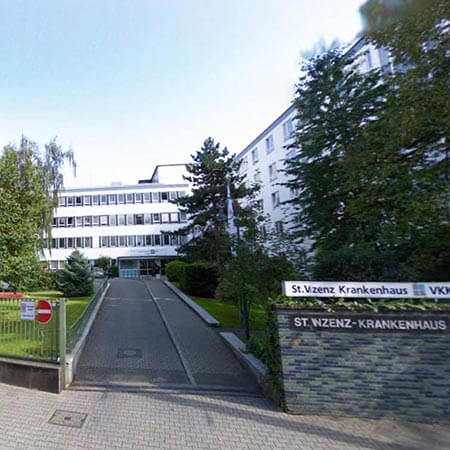
Department of Adult and Pediatric Orthopedics, Foot Surgery
The Department of Adult and Pediatric Orthopedics, Foot Surgery offers the widest range of modern medical services to patients suffering from musculoskeletal diseases. The department specializes in knee and hip replacement surgery, including revision interventions to replace previously implanted artificial joints. The department has the status of a certified Maximum Care Endoprosthetics Center (endoCert), which means adherence to the requirements of European professional societies for carrying out procedures of this kind, a high level of safety and treatment efficiency. It is worth noting that the department uses the innovative ROSA® robotic system for performing knee replacement surgery. A special Rapid Recovery Program is used for the rapid recovery of mobility after joint surgery, which allows the patients to quickly return to their usual life. An integral part of the department's clinical practice is also the treatment of foot diseases and deformities in adults and children. The medical facility has been operating for more than 50 years, and therefore it provides patients with the highest quality medical care and easily copes even with highly severe pathologies.
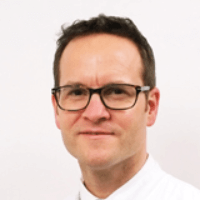


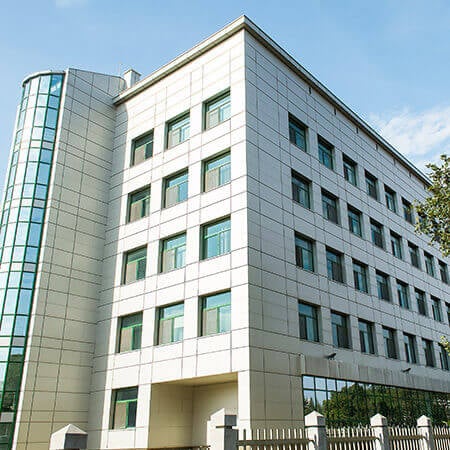
Department of Adult and Pediatric Orthopedics, Trauma Surgery, Foot Surgery, Hand Surgery and Rheumatology
The Department of Adult and Pediatric Orthopedics, Trauma Surgery, Foot Surgery, Hand Surgery and Rheumatology offers the full range of diagnostic and therapeutic services in its areas of specialization. The key areas of work of the department's doctors include large joint arthroplasty, arthroscopic interventions on the knee, hip, and shoulder joints, conservative and surgical treatment of foot and hand diseases and deformities, rheumatic joint lesions, orthopedic diseases in children, and musculoskeletal injuries. The key to successful clinical practice is the professionalism and unique experience of the department's medical team, combined with the advanced infrastructure and state-of-the-art equipment. The department has 5 operating rooms equipped with the latest technology. Most surgical interventions are performed using minimally invasive techniques, due to which, in the shortest possible time, the patient is verticalized, their mobility is restored, and a pronounced pain syndrome is excluded. The department annually performs more than 4,500 surgical interventions, including especially complex ones, so the specialists at the medical facility are rightfully proud of their impressive clinical experience in the surgical treatment of orthopedic diseases. Over the years, the department has gained an excellent reputation not only in Germany but also far beyond its borders.
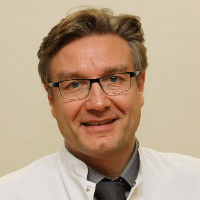

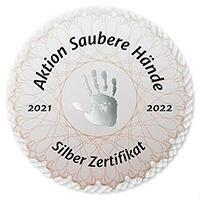
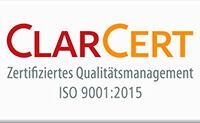

Department of Adult and Pediatric Orthopedics
The University Hospital Ulm is an advanced medical complex that provides patients with high-class medical care using the very latest scientific achievements. The medical facility has been performing successful clinical activities for more than 40 years and has long earned an excellent reputation throughout Europe. The hospital regularly demonstrates high treatment success rates, takes an active part in the training of medical students, and works tirelessly on promising research projects. The university hospital consists of 29 specialized departments and 16 scientific institutes, where more than 7,000 highly qualified employees work for the benefit of their patients. More than 55,000 inpatients and about 300,000 outpatients are treated here every year. The hospital has 1,274 beds. The medical team of the hospital is focused on providing personalized medical services using the most modern and sparing diagnostic and treatment methods.
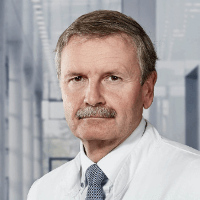





An Achilles tendon rupture causes ankle pain, tissue swelling, and ankle joint dysfunction. In most cases, this injury requires surgery. To repair the ligament, German surgeons most often use Achilles tendon suturing or plastic surgery. Doctors in this country perform minimally invasive surgery to reduce the risk of complications and accelerate the recovery of the patient.
Content
- Why is surgical treatment better than a conservative one?
- What operations are used for Achilles tendon injury
- Achilles tendon suturing
- Achilles tendon plastic surgery
- Why is it worth undergoing treatment in Germany?
Why is surgical treatment better than a conservative one?
Until the end of the 20th century, there were discussions about what is better: conservative management of patients or surgical intervention. However, since the late 80s, surgical tactics began to dominate, and in the 90s, dominance became total. In the 21st century, operations for Achilles tendon rupture are becoming more sparing, safe, and less traumatic. Therefore, conservative treatment is used extremely rarely.
Conservative tactics are attractive in that they have a low risk of complications. It is not characterized by surgical risks: there are no infections, damage to other tendons, nerves, wound healing problems, etc. In the 20th century, these advantages were relevant since the operations were traumatic, and the risk of complications reached 25%.
However, there has never been any doubt that surgical treatment of the Achilles tendon is more effective than conservative treatment. Conservative tactics include long-term limb immobilization for up to 2-3 months. During this time, muscle atrophy occurs, and degenerative changes in the Achilles tendon are possible. As a result, every third person has a repeated rupture.
After a well-performed surgical procedure, the risk of recurrent Achilles tendon rupture is only 2%. This treatment method is more reliable. The operations are especially successful if they are performed within the first ten days of injury. Good results are achieved in the first three weeks. After this time, the Achilles tendon rupture is considered chronic, and it is more complex to treat.
What operations are used for Achilles tendon injury
The Achilles tendon can be repaired using various techniques. Acute Achilles tendon injury is most commonly treated with suturing. In case of chronic injuries, doctors resort to plastic surgery. However, these terms hide dozens of different types of operations. There are more than 80 types of Achilles suturing techniques and more than 40 types of plastic surgery.
There are the following types of surgical techniques for Achilles tendon rupture:
- open – classical interventions through a large incision in the ankle;
- percutaneous – minimally invasive closed interventions, without or with ultrasound guidance;
- endoscopic minimally invasive surgery – under the guidance of an endoscope (the doctor controls his actions, focusing on the images transmitted by a mini video camera).
The easiest way to repair the calcaneal tendon is during open surgery. The doctor can reliably see the tendon and sutures it with a low risk of damaging healthy tissue. However, such interventions are traumatic and require a long recovery. Their problem is the high risk of infectious complications. A large unaesthetic scar is formed in the area of the incision on the ankle.
Minimally invasive surgery is more complex, but it is safer and more sparing. Therefore, German surgeons prefer the treatment of tendon rupture using percutaneous and endoscopic techniques.
Achilles tendon suturing
Suturing for acute Achilles tendon rupture remains the mainstay of treatment. Timely surgery allows for achieving excellent results. In the first two weeks, there are no degenerative changes in the rupture area yet. If signs of early degeneration or rupture of the torn Achilles tendon are detected, ligament plastic surgery is preferable.
The suturing can be performed using different techniques:
- open surgery;
- the closed percutaneous technique (suturing with a needle inserted into the Achilles tendon);
- minimally invasive surgery under endoscopic guidance.
The closed method of suturing with buried sutures was developed back in 1977. It is minimally traumatic, and the procedure can be performed even on an outpatient basis. However, in the classical version, this procedure for the Achilles tendon rupture has not become widespread. The reason is the lack of image guidance. The doctor does not see what he is suturing and whether he is doing it well. In addition, there is a risk of damage to the adjacent nerves. As a result, the sutures often fail after the procedure, and the calcaneal tendon is ruptured again.
However, modified versions of percutaneous techniques are successfully used in the 21st century. To control the procedure, doctors began to use ultrasound scanning. In addition, special guides and suturing devices appeared. Doctors can accurately bring together and suture the ends of the Achilles tendon through an incision only 1 cm long: quickly, reliably, and with minimal trauma rate.
German hospitals also perform minimally invasive endoscopic surgery. They are performed through 1-2 cm incisions. Doctors use a mini video camera with lighting to control their actions. Endoscopic guidance provides reliable surgery outcomes with a low risk of complications.
Minimally invasive surgery on the Achilles tendon benefits the patient's recovery. It creates the prerequisites for early mobilization and the start of rehabilitation measures. As a result, the person has less muscle atrophy and less risk of ankle stiffness. Patients quickly return to everyday life and maximum loads, which is especially important for professional athletes.
Achilles tendon plastic surgery
Plastic surgery involves strengthening the calcaneal tendon with additional materials: biological or synthetic ones. This type of Achilles tendon surgery is used for chronic injuries. In addition, plastic surgery is performed in case of acute Achilles tendon rupture, which is accompanied by dissociation of the Achilles tendon.
The following materials can be used for plastic surgery:
- autograft – a fragment of the tendon, usually from the lower extremity, including from the upper part of the Achilles tendon;
- allograft – a preserved donor tendon;
- xenograft – a tendon of animals;
- synthetic materials.
The calcaneal tendon is most often restored with the patient's own tissues. They are characterized by good engraftment and provide normal foot function. After autoplasty, the blood supply to the Achilles tendon is better. The risk of recurrent rupture is negligible. This treatment method allows doctors to get the strongest tendon compared to other plastic surgery techniques. It is ideal for athletes and young people engaged in physical labor. After surgery and rehabilitation, the patient can withstand any load on the foot. However, this option has a drawback: the intervention is more traumatic since, in addition to the Achilles tendon, the doctor also has to operate on another tendon.
Alloplasty is another option for Achilles tendon repair. The surgical intervention ensures complete restoration of the function of the foot. Donor tendons are processed to minimize the risk of immune reactions and stored for a long time in preserved form. As a result, they become less durable than a native human tendon. After this surgery, the maximum sport load on the foot has a higher risk of recurrent rupture. Therefore, the intervention is performed mainly in patients with low physical activity, or at least those with no extreme loads on the foot.
Synthetic materials are used less frequently for Achilles tendon plastic surgery. A foreign body in the organism can provoke an inflammatory reaction. However, bioinert materials have appeared in recent years and are strong enough. As a rule, their use does not cause any complications. The results of plastic surgery are comparable to the Achilles tendon repair with autologous materials.
Why is it worth undergoing treatment in Germany?
German orthopedists have a brilliant reputation all over the world. Athletes often come to Germany for treatment not only from countries with poorly developed medicine but also from economically prosperous states. Many patients want to use the services of the best specialists to recover minimally traumatically, without complications, and return to training and competition as soon as possible.
In Germany, you can count on:
- minimally invasive techniques for performing operations through short incisions 1-2 cm long;
- surgical intervention under endoscopic guidance;
- minimal risk of complications;
- reliable suturing of the Achilles tendon rupture: the risk of recurrent ligament tear will be the same as the probability of the primary rupture;
- successful treatment even in the most complex cases: with dissociation of the Achilles tendon, concomitant injuries of the lower extremity, chronic injuries, and recurrent tendon rupture.
To undergo surgical treatment of Achilles tendon injuries in Germany, please use the Booking Health service. On our website, you have the opportunity to get up-to-date and accurate information about the cost of treatment in Germany, compare prices in different German hospitals and book a medical care program at a favorable price. The treatment will be easier and faster for you, and the cost of treatment in Germany will be lower.
You are welcome to leave your request on the Booking Health website. Our employee will contact you, consult, and answer all questions. We will take care of the organization of your trip abroad. We will provide the following benefits for you:
- We will select the best German hospital whose doctors specialize in minimally invasive Achilles tendon repair and achieve the best results.
- We will help you overcome the language barrier and establish communication with the doctor in the German hospital.
- We will reduce the waiting period for tendon rupture treatment, and you will receive medical care on the most suitable dates.
- We will reduce the price. The cost of treatment in Germany for tendon rupture will be lower than usual due to the lack of overpricing and coefficients for foreign patients.
- Our specialists will solve any organizational issues: paperwork, transfer from the airport to the German hospital and back, hotel booking, and interpreting services.
- We will prepare your documents and translate them into English or German. You do not have to undergo previously performed diagnostic procedures.
- We will keep in contact with the German hospital after completing the tendon rupture treatment.
- We will organize additional diagnostics and treatment, if necessary.
- We will buy medicines in another country and forward them to your native country.
While the best specialists in the world take care of your health, the Booking Health staff will help reduce the cost of treatment in Germany and take care of all your travel arrangements.
Authors:
The article was edited by medical experts, board certified doctors Dr. Nadezhda Ivanisova and Dr. Vadim Zhiliuk. For the treatment of the conditions referred to in the article, you must consult a doctor; the information in the article is not intended for self-medication!
Sources:

